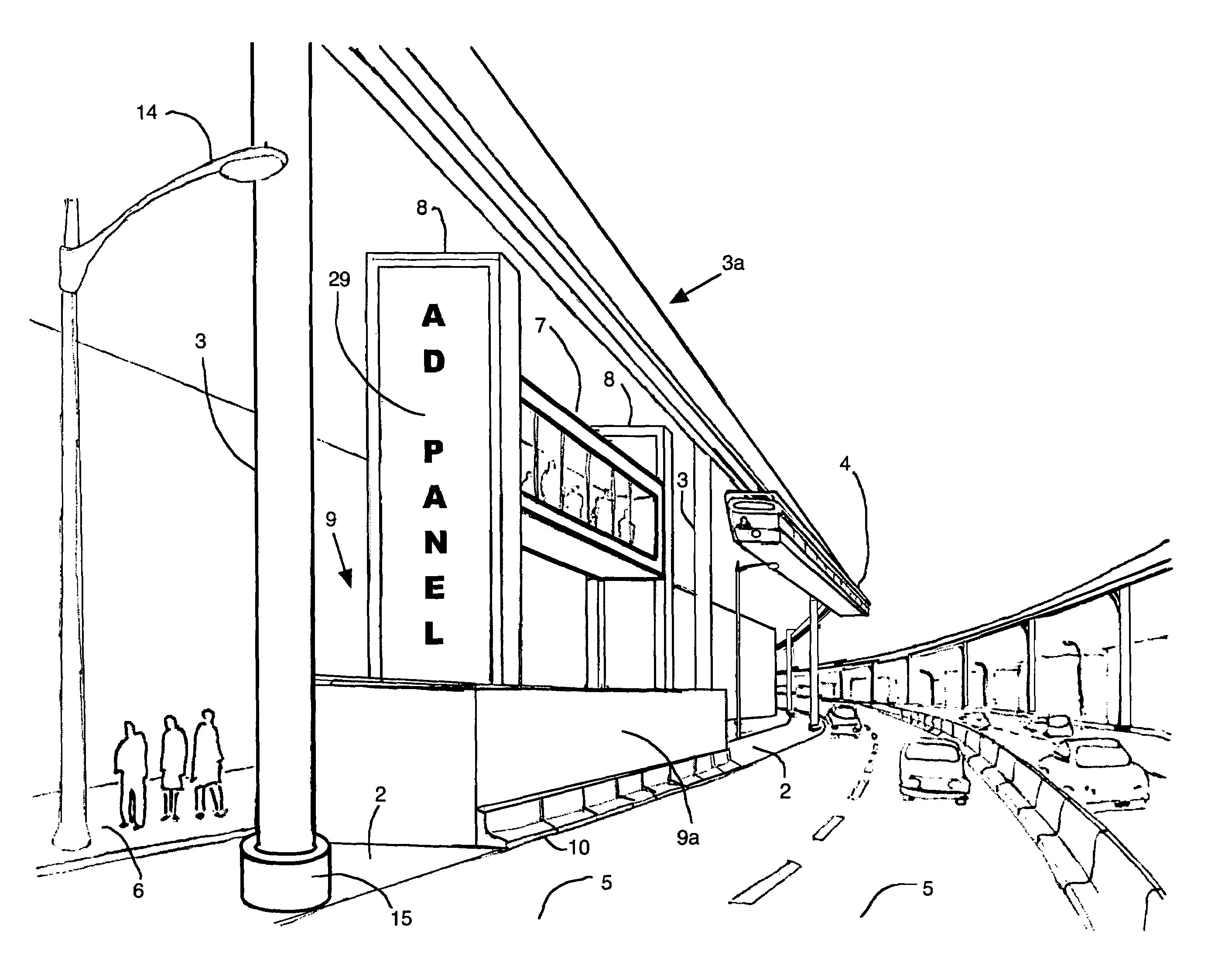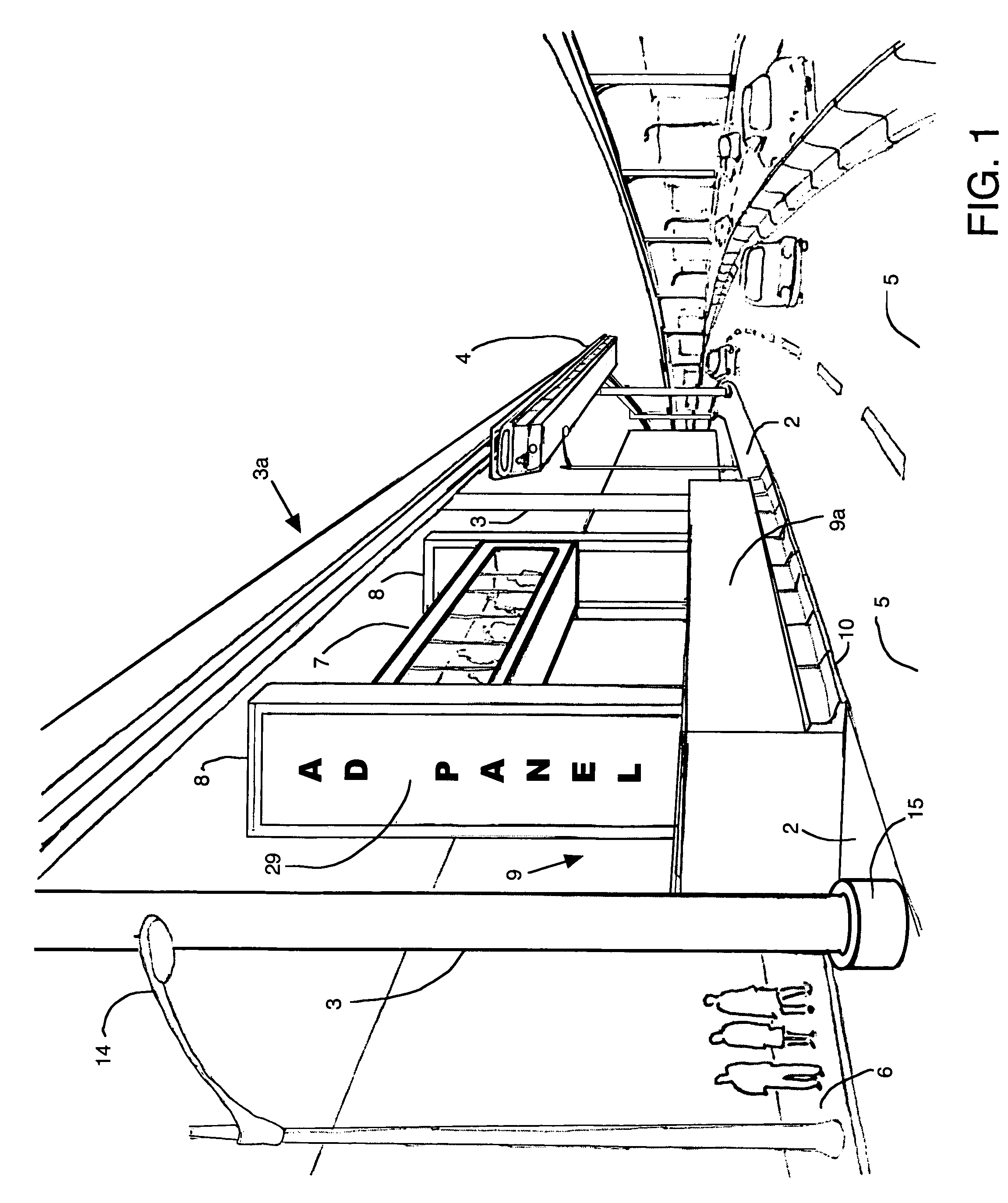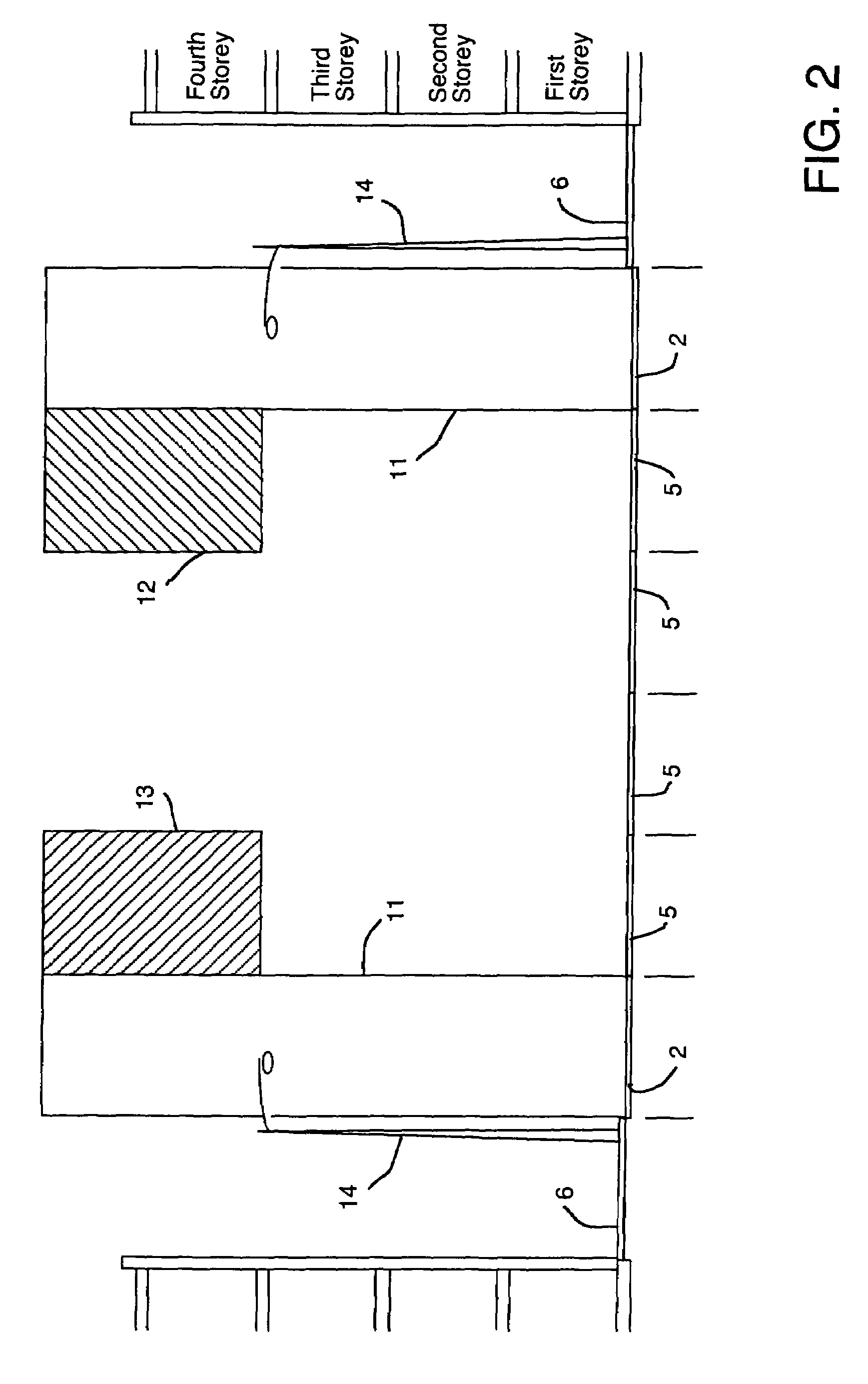Elevated bus rapid transit system
a bus system and bus technology, applied in railway tracks, transportation and packaging, construction, etc., can solve the problems of prior art elevated rail and monorail systems that cannot be used, and achieve the effects of reducing the time of trip, and reducing the time of switching directions
- Summary
- Abstract
- Description
- Claims
- Application Information
AI Technical Summary
Benefits of technology
Problems solved by technology
Method used
Image
Examples
Embodiment Construction
[0033]Referring to FIG. 1, there is shown a preferred embodiment of the high capacity elevated rapid bus system according to the present invention useful in increasing the hourly passenger capacity and decreasing the passenger trip time of a public transit bus route. The bus system is positioned in an existing motor vehicle road lane, preferably curb lane 2, which is often already dedicated to parking and / or used as a priority bus lane of a city street. Curb lane 2 is used to anchor support structures 3 in the form of a plurality of space support columns that suspend an elevated guideway 3a above the level of the street in a cantilevered configuration. An elevated bus 4 for carrying passengers is movable along the elevated guideway 3a above a road lane 5 on which normal vehicular traffic moves. Elevated bus 4 is shown suspended beneath elevated guideway 3a in FIG. 1, and is preferably suspended over the road traffic lane 5 adjacent to the parking and / or curb lane 2 next to the publi...
PUM
 Login to View More
Login to View More Abstract
Description
Claims
Application Information
 Login to View More
Login to View More - R&D
- Intellectual Property
- Life Sciences
- Materials
- Tech Scout
- Unparalleled Data Quality
- Higher Quality Content
- 60% Fewer Hallucinations
Browse by: Latest US Patents, China's latest patents, Technical Efficacy Thesaurus, Application Domain, Technology Topic, Popular Technical Reports.
© 2025 PatSnap. All rights reserved.Legal|Privacy policy|Modern Slavery Act Transparency Statement|Sitemap|About US| Contact US: help@patsnap.com



